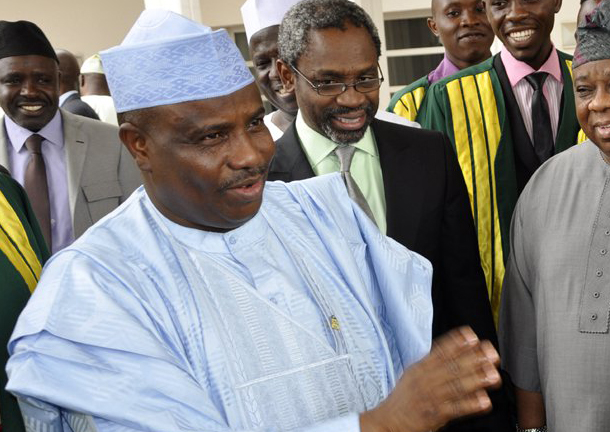EURUSD – Awaiting Draghi’s view on OPEC Decision
After commencing the week within touching distance of the current yearly low of 1.2358, the Eurodollar bounced back to rally as high as 1.2530 last week. The combination of improved economic data from Germany, USD profit-taking ahead of Thanksgiving holidays, and comments from ECB President Mario Draghi that time is still needed for current stimulus measures, reduced speculation that the ECB will act this Thursday and provided Euro bulls with some momentum.
The upcoming week is going to be a volatile one for the pair, with the ECB under pressure to introduce further stimulus on Thursday. While the Euro found reprieve from Dollar profit-taking last week, EU Sovereign Yields falling to record lows suggests investors are still anxious towards the Eurodollar risks remaining strong. In the event the ECB leaves monetary policy unchanged on Thursday, the pair would likely attempt a rally but Euro bulls may be left halted by Mario Draghi’s press conference. The ECB President is more than likely to be quizzed on whether the OPEC decision not to cut oil production will further weaken EU inflation levels. If Draghi signals there will now be further inflation pressures in the short-term, it would not be a surprise if traders become very tempted to begin pricing in potential stimulus early next year.
From a technical standpoint on the Daily timeframe, the Eurodollar continues to trade in a bearish direction. If the pair moves to the downside, support can be found at 1.24, 1.2376 and 1.2358. In the event the pair unexpectedly rallies to the upside, resistance can be found at 1.2486, 1.2522 and 1.2560.
Advertisement
GBPUSD – Benefiting from USD weakness
It was previously mentioned that investor attraction towards the Cable was weak, with the pair’s strongest chances of reversing to the upside resting with USD profit-taking, and this is exactly from transpired last week. The pair rallied from 1.5641 and even made a brief visit towards 1.58 (1.5824) before consolidating around 1.5770. Anxiety among investors ahead of UK Prime Minister David Cameron’s speech to outline proposals for tougher EU reforms for migrant benefits sent the pair all the way back down to the low 1.57s, mainly due to fears that if the EU does not agree to these proposals, the UK might become one step closer to leaving the EU.
The week ahead is likely to be more of the same for the Cable, with the pair’s highest chances of progressing to the upside being reliant on USD profit-taking inspiring risk appetite into the currency markets. The upcoming PMIs from the UK are expected to remain strong, but with bets for an interest rate rise continuing to be pushed back, Sterling bulls may find it difficult to charge forward. There are no expectations for the Bank of England (BoE) to change monetary policy this Thursday. There have been talks regarding one of the Monetary Policy Committee (MPC) dissenters switching votes, but judging by previous comments from members Mr Weale and Mr McCafferty, that’s not expected either.
Advertisement
The major downside risk for the Sterling/Dollar this week is Wednesday’s Autumn Statement, and judging by the pair commencing the week by already recording a new yearly low at 1.5586, I think investors are arriving early to price in a downbeat statement. David Cameron attracted vast media attention when he commented after the G-20 Summit in Brisbane that the world economy could be set to enter another recession, with the “red warning lights already on the dashboard” and this suggests to me that investors may be uninspired with what they hear on Wednesday.
In reference to the technicals on the Daily timeframe, the GBPUSD is currently on the edge of falling below its wedge pattern. If the early morning downside pressure continues throughout the upcoming week, support can be found at 1.5586, 1.5520 and 1.5450.
AUDUSD – Bears take control
Reserve Bank of Australia (RBA) Deputy Governor Philip Lowe unsettled investors last week and sent the Aussie crashing through its critical 0.8540 support level when he stressed the Aussie is set to decline in line with commodity prices. Traders taking profit on the USD ahead of Thanksgiving holidays led to the bulls gaining some momentum, before the OPEC decision not to cut Oil production inspired the bears to return and led to the Aussie concluding the week at its lowest level in over four years.
Advertisement
From a technical standpoint, this pair looks weak and with there being further major event risks for the Aussie this week, the downside momentum may not be over quite yet. On Tuesday, the latest RBA Interest Rate Decision is announced. Although the RBA are expected to leave monetary policy unchanged, any further indications of the RBA cutting interest rates at some point next year will provide momentum for the bears to send the Aussie lower. On Wednesday, Australian GDP is announced; the RBA warned as far back as April that the Australian economy was set to enter a weaker period of growth and any indications of these claims being validated would again mount pressure on the Aussie.
The strongest chances of the Aussie recovering losses would likely rest upon the GDP being stronger than expected, or USD profit-taking resurfacing again. The US Non-Farm Payroll data release concludes the week on Friday, with any potential Dollar weakness likely to appreciate the Aussie. In the meantime, the Aussie looks bearish and likely to fall further. If this happens, support can be found at 0.8417, 0.8370 and 0.8316.
Gold – Back below $1180
Ahead of the Swiss Gold Referendum, the yellow metal traded very cautiously between $1190 and $1207. Volatility picked up on Friday, where a combination of Thursday’s OPEC decision not to cut Oil production and a Swiss poll indicating that support for buying Gold was declining sent Gold to $1165. Confirmation overnight that Switzerland voted against purchasing Gold has pressured the metal and sent Gold to its lowest valuation in nearly three weeks at $1142.
Advertisement
Gold looks bearish below $1180 and further signs this week that US economic activity is improving will further pressure metals. Traders should keep an eye on US Manufacturing ISMs (Monday), Construction Spending (Tuesday), ISM Non-Manufacturing Composite (Wednesday) and specifically, Friday’s US NFP. If the US jobs report heightens speculation that the Federal Reserve will turn hawkish sooner than expected, there is still potential for Gold to fall below $1100 for the first time since March 2010.
*Ahmad is chief market analyst at FXTM.
Advertisement
Add a comment






